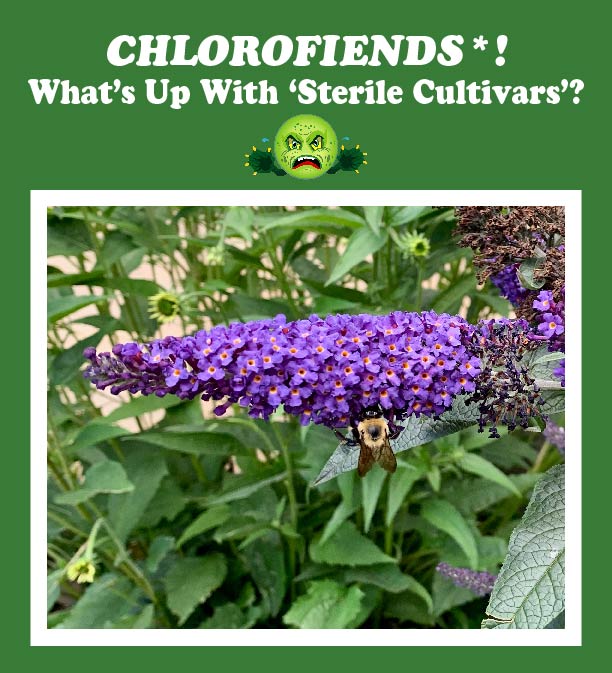By Lisa Lofland Gould
Native plants are the backbone of ecosystems; sterile cultivars are not the ecological equivalent. Some questions to consider are: What’s a cultivar? Why should we avoid sterile cultivars? And what happens when we try to breed sterility into invasive plant species?
The topic of sterile cultivars of invasive plants is complex. They seem a great boon to the nursery and landscape industry, a way to keep selling popular and economically valuable non-native landscape plants without the baggage of knowing they might become invasive. The complexity comes when you try to nail down ‘sterile.’
As the human population grows, there is more demand for housing and planted landscapes, which have historically been planted primarily with non-native plants. Even if every non-native landscape plant was completely sterile, we would still be filling our landscapes with plants that are NOT the ecological equivalent of our native plants (for more information on the role of native plants as the backbone of ecosystems, see the Spring 2023 Chlorofiends!).
But first, what’s a cultivar? A cultivar is a plant that people have bred for selected characteristics; a cultivar is no longer the same plant as the original “straight species.” Some cultivars start out as hybrids of plants that would be unlikely to hybridize in the wild, while others have been bred to emphasize particular traits, such as increased flower size, more fragrance, unusual leaf color, dwarf stature, decreased fruit production, and much more. There are many cultivars of both native and non-native plants, but the focus of this article is the attempt to breed sterility into invasive plant species, and thus decrease their spread into natural habitats where they out-compete the native plants that our native wildlife has evolved with and depend on.
A classic misstep produced a scourge
The poster child for failed sterile cultivars is, of course, Callery Pear (Pyrus calleryana ‘Bradford’). This cultivar is self-sterile—it cannot pollinate itself. But as we now know all too well, it can cross-pollinate with other forms of Callery Pear and produce viable fruit; it has become a scourge on the landscape over most of the eastern half of the US.
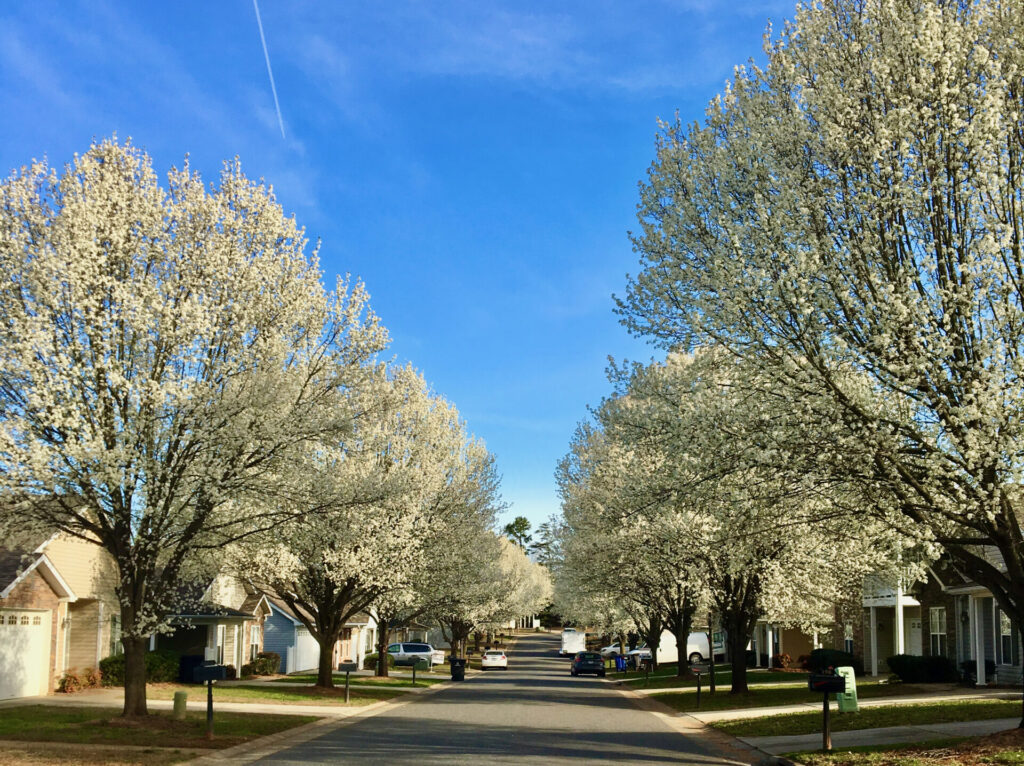
Other self-sterile cultivars have cross-pollinated. A well-known problem plant, Purple Loosestrife (Lythrum salicaria), is a serious invasive in wetlands in central and southern Canada and throughout most of the US. Cultivars including ‘Dropmore Purple’ and ‘Morden’s Pink’ are, like Bradford Pear, self-sterile, but they, too, have been shown to cross-pollinate with the straight species and thus contribute to the spread of this plant. A number of states regulate the sales of invasive plants. New York State, for example, prohibits the sale of Japanese Barberry (Berberis thunbergii), Golden Bamboo (Phyllostachys aurea), and Morrow Honeysuckle (Lonicera morrowii), among many others. Apparently, that state’s approach has been “guilty until proven innocent”: cultivars of such species cannot be sold without strong proof that they won’t become invasive. Maine also prohibits the sale of many plants, including all forms of Japanese Barberry, as well as the similarly aggressive Burning Bush (Euonymus alatus).
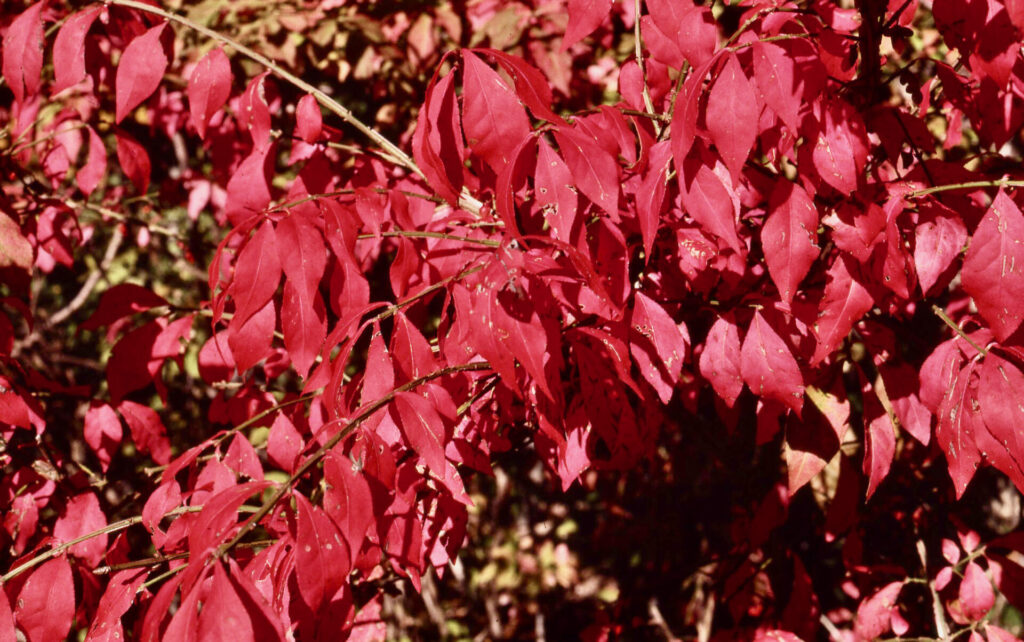
More research is called for
In many states with a strong nursery industry, universities are working to develop sterile or non-invasive cultivars of popular nursery plants. There are many ways to reduce the ability of an invasive plant to spread by seed, including minimizing the number of seeds that are produced, preventing seeds from germinating, and reducing the viability of the pollen. The University of Connecticut has been working on a sterile cultivar of Burning Bush, a triploid (three sets of chromosomes rather than the usual two) form that does not appear to produce viable seeds. At the University of Oregon, researchers developed what they believed were sterile or near-sterile triploid cultivars of Rose-of-Sharon (Hibiscus syriacus)—a fast-growing shrub notorious for producing large quantities of seeds—but subsequent studies showed these could backcross with other cultivars and have some fertility restored. More research is called for.
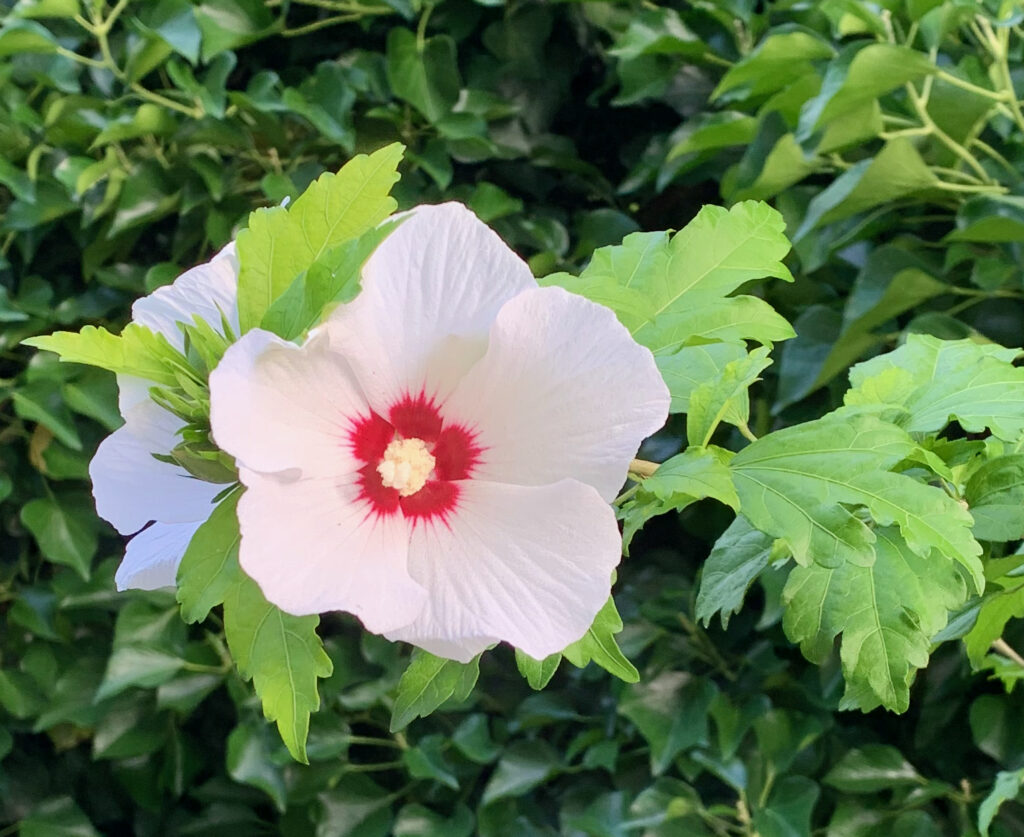
One of the most invasive groups of shrubs in our region are the privets (Ligustrum spp.), which are also widely sold as landscape plants. A nursery’s website “Proven Winners” advertises a form of California Privet (Ligustrum ovalifolium ‘Good Vibrations’) that they do not claim is sterile, but note, “We have not seen this particular variety flower in several years of observation. As such, it does not [produce] fruit or seed, either, that we have observed.” North Carolina State University (NCSU) has developed a privet cultivar ‘Golden Ticket’ (Ligustrum x vicaryi), also advertised on the Proven Winners website as “non-invasive.” The North Carolina Extension Gardener Plant Toolbox states that the fruits it produces “remain on the plant.” I spoke with NCSU professor Tom Ranney, who helped develop ‘Golden Ticket.’ He notes: “We have not done in-depth fertility studies on it, but when we had it in the field with other Ligustrum, [for] many years it did not produce any fruit or just a few stray fruits compared to copious amounts on other plants.”
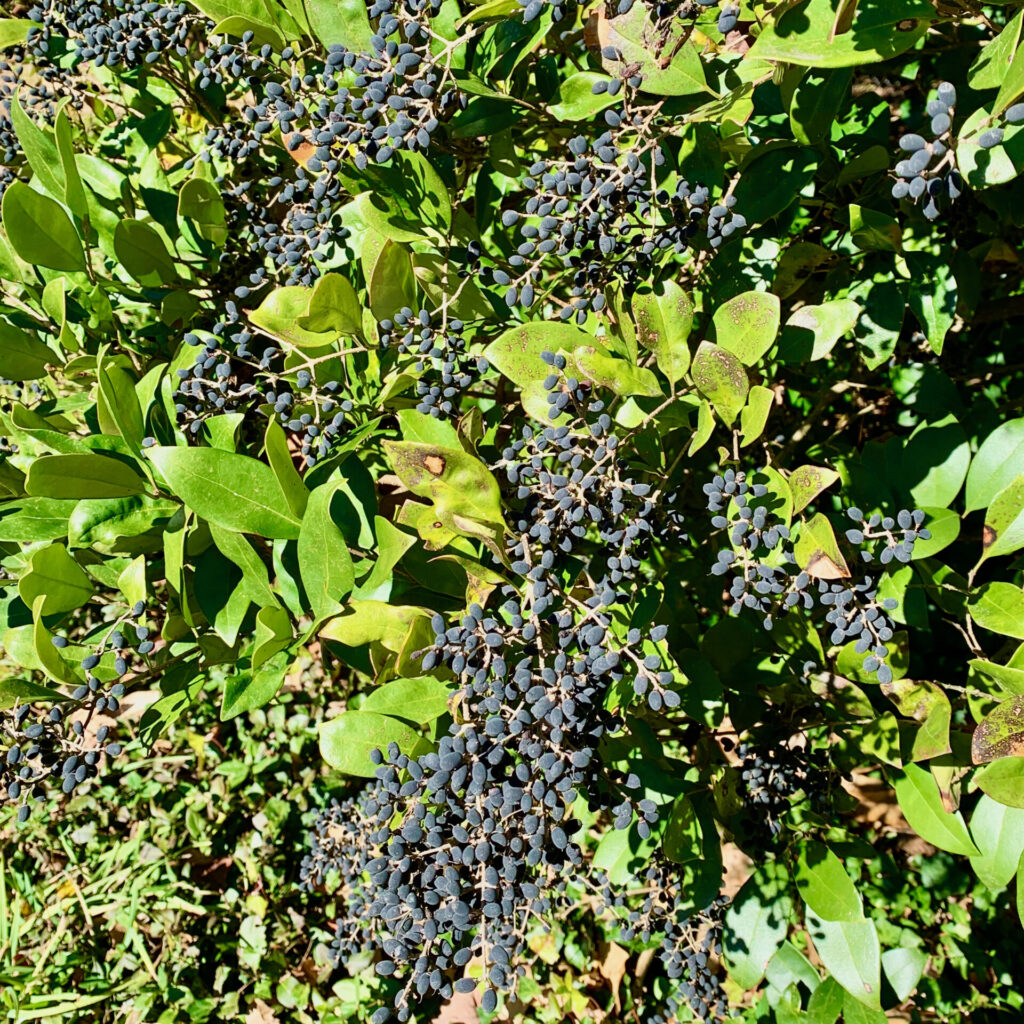
Dr. Ranney’s lab has also worked on breeding less invasive forms of Chinese Silver Grass/Eulalia (Miscanthus sinensis), an invasive grass that is spreading in North Carolina, especially in the mountains and piedmont, and “increasingly moving into a wide variety of natural habitats, including those with prescribed fire” (Weakley 2022). Dr. Ranney describes these cultivars as “highly infertile triploids, [in which] seed set and viability is greatly reduced and the few seedlings that are produced are generally abnormal aneuploids.” Aneuploids do not have the normal number of chromosomes, either lacking some or having more than usual.

Orange-eye Butterfly-bush (Buddleja davidii), sometimes called Summer Lilac, is another popular ornamental shrub that is very invasive, especially in the mid-Atlantic states, the Pacific Northwest, and in Europe and New Zealand. This Asian plant is fast-growing and able to produce seed after only one year. While the nectar of butterfly-bush attracts bees and butterflies, it is a host species for only one of the 725 butterfly species that live in North America (Tallamy 2019) 1.
“Sterile” cultivars of butterfly-bush can produce thousands of fertile seeds
Work has been done to produce sterile forms of butterfly-bush, but although these cultivars appear to have reduced sterility, they still produce some fertile seeds. A single shrub of straight-species butterfly-bush can produce up to 3 million seeds. Even if a cultivar’s fertility is reduced to 2% of a standard plant’s seed production, that still adds up to about 60,000 seeds, which are easily spread by wind and runoff water. As with Bradford Pear, Purple Loosestrife, and Rose-of-Sharon, viable pollen from the cultivars can still be released, and the flowers of the cultivars can accept pollen from escaped plants, leading to interbreeding and sometimes restored fertility.

As I said, it’s complicated! Botanist and landscape designer Susan Andrews (and NCNPS member) has observed several cases of new privet cultivars reverting to the straight species in as little as one year; if the cultivars are not kept pruned, they may revert and begin to produce fruit again. Susan notes“at this time it is important to consider that we don’t have the long-term data to support the claims of non-invasiveness or sterility of these newer selections of known invasive plants when they are grown outside of research plots.” With these known invasives, any fertility is potentially ecologically damaging.
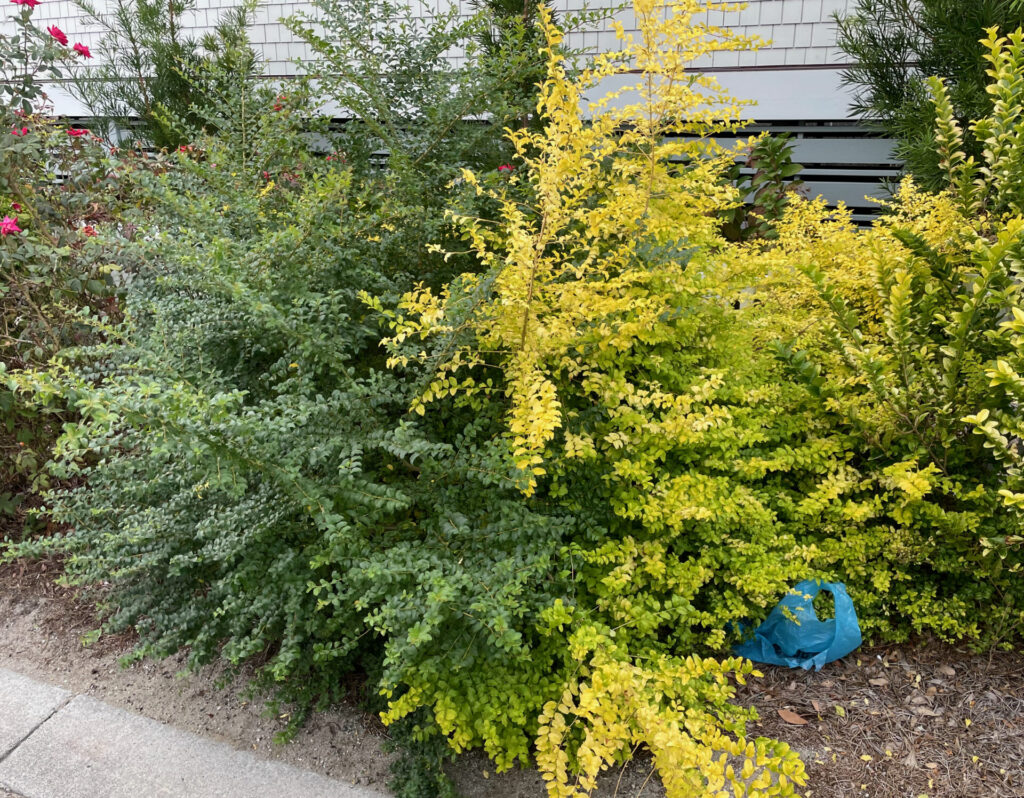
Does New York State’s approach to invasive plant sales get it right: “guilty until proven innocent”? For many years, the NC Native Plant Society has been working with the nursery and landscape industry, encouraging growing and selling native plants, and offering native alternatives to non-native landscape plants. This is vital work, and my hat’s off to all our members involved in this effort. As always, GO NATIVE!
By Lisa Lofland Gould
Native Plant News – Fall 2023
1Tallamy, Doug. 2019. Nature’s Best Hope: A New Approach to Conservation That Starts in Your Yard (Timber Press).

Lisa Gould is a plant ecologist and co-founder of the Rhode Island Wild Plant Society; she currently serves on the NCNPS board of directors and chairs the management committee for the Emily Allen Wildflower Preserve in Winston-Salem.
Chlorofiends! is a regular column in Native Plant News. If you have information or comments on invasive species in North Carolina, please share them with Lisa Gould (lisalgould@gmail.com).
*Thanks to Jim Butcher’s The Dresden Files for the column title.
